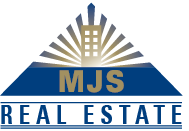Introduction
The gross-up clauses found in some commercial leases (office, industrial and retail space) are rather difficult clauses to conceptualize and understand for the majority of tenants and even for the various stakeholders in the field of commercial real estate.
These clauses are generally found in the section of the lease which deals with the additional rent, which enumerates the rules that a lessor must follow in order to re-invoice the tenants for the operating expenses he has incurred on his property during a year. The inclusion of gross-up clauses in the landlords’ standard leases has increased in recent years.
We are starting today a series of blogs dealing with these clauses. In the next lines, I will try to define and explain the concept with rudimentary and simplified examples.
What is it exactly?
A gross-up clause is a permission granted to the lessor to artificially increase an operating cost, the quantum of which usually varies according to the occupancy rate of the building. This increase is generally applicable to variable expenses that are incurred in the leased premises of the building. The actual cost escalation rate is influenced by the average occupancy rate of the building for a fiscal year. If properly interpreted and calculated, the gross-up clause allows for a more equitable allocation, between the lessor and tenants, of costs for services rendered in the lease premises.
Examples to illustrate the concept
In the table that accompanies this text (click here), you will find examples that illustrate the rationale for a gross-up clause and will promote understanding of how it works. These examples apply to a housekeeping contract based on the following assumptions:
- The housekeeping contract provides for a fixed annual fee of $ 60,000 for the maintenance of all common areas of the building and $ 1 per square foot for tenant occupied premises;
- The total rentable area of the building is 100,000 square feet;
- The definition of additional rent for all leases of the building provides that the costs of housekeeping are recoverable from the tenants;
Scenario 1: the building is 100% occupied
In this first scenario, the gross-up clause does not apply since the building is 100% occupied. The landlord recovers 100% of the cost of the housekeeping contract; the cost he assumes is zero. He is therefore not prejudiced.
As for the tenants, they receive 100% of the housekeeping service for their leased premises and common areas for $ 1.60 per sq. ft.
Scenario 2: the building is 80% occupied with no gross-up clause provided for in the leases
In this second scenario, the gross-up does not apply since it was not provided for in the leases. The lessor recovers only 80% of the cost of the housekeeping contract ($ 112,000 / $ 140,000); the cost he bears is $ 28,000 or 20% (building vacancy rate) of the total cost. Part of the cost borne by the lessor applies to the maintenance of leased premises that are occupied by tenants. The lessor suffers some damage.
As for the tenants occupying the building, they continue to benefit from 100% of the housekeeping service of their premises and common areas but at a reduced rate of $ 1.40 per sq. ft. The lessor therefore subsidizes the cleaning of tenants’ leased premises by $ 0.20 per sq. ft. (actual cost of scenario 1: $ 1.60 minus cost of scenario 2: $ 1.40).
Scenario 3: the building is 80% occupied and a 100% gross-up clause is provided for in the leases
In this third scenario, the gross-up clause applies since it was provided for in the leases and the occupancy rate is less than 100%. By increasing the cost of maintenance, to the amount obtained if the building was 100% occupied, the lessor recovers 91.4% of the actual total cost of the housekeeping contract ($ 128,000 / $ 140,000); the cost he bears is $ 12,000. This amount represents 20% (building vacancy rate) of the cost of maintaining common areas only ($ 12,000 / $ 60,000). The lessor is therefore not prejudiced by assuming only the costs derived from the impact of the vacancy rate on the common area cost, as is the case with any other expense of the building. In fact, the risk associated with the vacancy rate of a building is an inherent risk that any real estate owner assumes when acquiring a property.
As for the tenants occupying the building, they continue to benefit from 100% of the housekeeping service of their premises and common areas at a rate of $ 1.60 per square foot ($ 160,000 / 100,000 sq. ft.). The lessor therefore no longer subsidizes the cleaning of the leased premises and the tenants pay the same amount as if the building were 100% occupied, as illustrated in scenario 1.
Equity must prevail
As the previous examples have shown, when properly interpreted and applied, the gross-up clause re-establishes equity in sharing, between landlords and tenants, of costs that vary according to the occupancy rate of a building. Landlords only bear the costs and inherent risks associated with owning a building. For their part, tenants pay the fair price for a service they benefit at all times even if the building is not 100% occupied.
Unfortunately for the tenants, over the years landlords have distorted this equity and they began to interpret and apply these clauses in an increasingly unjustified way.
Next blogs
In future blogs, we will see together some tricks and inappropriate methods used by landlords in calculating the gross-ups. Real life cases will be disclosed. We will also see how tenants and their legal representatives can minimize their financial exposure in this regard by modifying the wording of the proposed gross-up clauses in the standard leases of the lessors.
Complicated isn’t it?
As you have seen, the gross-up clauses are rather difficult to understand. Do not hesitate to contact us if you wish to learn more about the subject or if you have questions / comments to submit.



